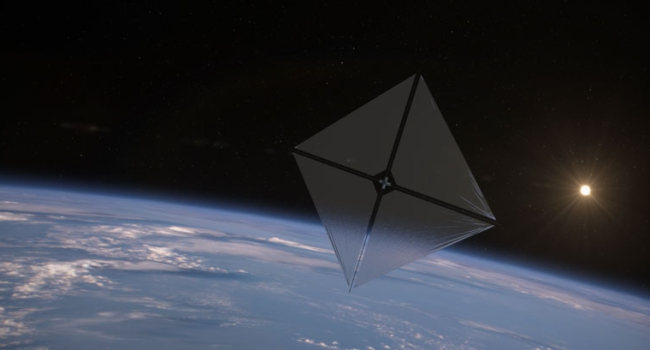
NASA creates new generation solar sail: What is it for?
In May 2024, NASA announced that it has prepared for the launch into space a platform with a next-generation solar sail. A small satellite will be launched later this month from Launch Complex No. 1 in Mahia, New Zealand, aboard a Rocket Lab Electron rocket. Once the platform is deployed into a sun-synchronous orbit at an altitude of 1000 km, the platform will unfurl a solar sail with an area of 80 square meters. Due to the sunlight reflected off the sail, the object will shine as brightly as the star Sirius.
For the testing of the new solar sail platform, the company NanoAvionics has manufactured a 12U-scale CubeSat. The aim of the test will be to verify the "sail rigging" system - specially designed composite masts for solar sails that, when collapsed, have a size roughly equivalent to a standard tape measure but can deploy into sufficiently rigid spars each seven meters in length.
It will take 25 minutes to deploy the experimental sail. Throughout this time, the deployment process will be recorded on camera. The launch's objective is to test the new deployable system and gather data for the development of even larger sails. Additionally, as an additional experiment, the possibility of maneuvering the CubeSat using sail orientation will be tested, similar to how it is done in sail sports on Earth. In space, however, the pressure on the sail will be exerted by photons emitted by the sun, but the principle remains the same.
In the long term, NASA believes that satellites with sails could be used in extended missions throughout the Solar System. This would allow for a departure from heavy engines and vast reserves of fuel. Satellites propelled by solar sails will be driven by the Sun, which, in human terms, is inexhaustible.
Regarding the sail deployment system, it could also find application in the construction of space stations (as a frame) and in the designs of lunar and Martian bases. This is a technology of broad applicability; all that remains is to test it in the conditions of space to confirm the durability and reliability of the chosen composite materials.
- Related News
- Is there a ninth planet in the solar system? Scientists find new evidence
- The end of the Universe: 3 plausible theories of a global apocalypse
- Mutated bacteria resistant to drugs found on the ISS: What does this mean and why is it a problem?
- 4 flares erupted from Sun in rare event: the Earth may be hit by geomagnetic storm (video)
- 11 incredible satellite photos published on Earth Day
- NASA shows all of Ingenuity's flight trajectories in one video
- Most read
month
week
day
- How will new technologies change future of finance? Interview with director of Apricot Capital (video) 778
- 10 most interesting architectural works of Zaha Hadid 772
- 5 original buildings with curious optical illusions (photos) 758
- Google is developing a budget smartwatch 697
- Alphabet will pay dividends for the first time in its history 686
- Large taxpayers of Armenia’s IT sector: What changes have taken place in 2024 Q1? 663
- 4 flares erupted from Sun in rare event: the Earth may be hit by geomagnetic storm (video) 651
- BAR Plus 2024: Samsung introduces USB drive that can withstand immersion in salt water for 72 hours (photo) 644
- Date of new Apple presentation known: When will they show us new iPad Pro with OLED screen? 641
- Mutated bacteria resistant to drugs found on the ISS: What does this mean and why is it a problem? 633
- Archive
